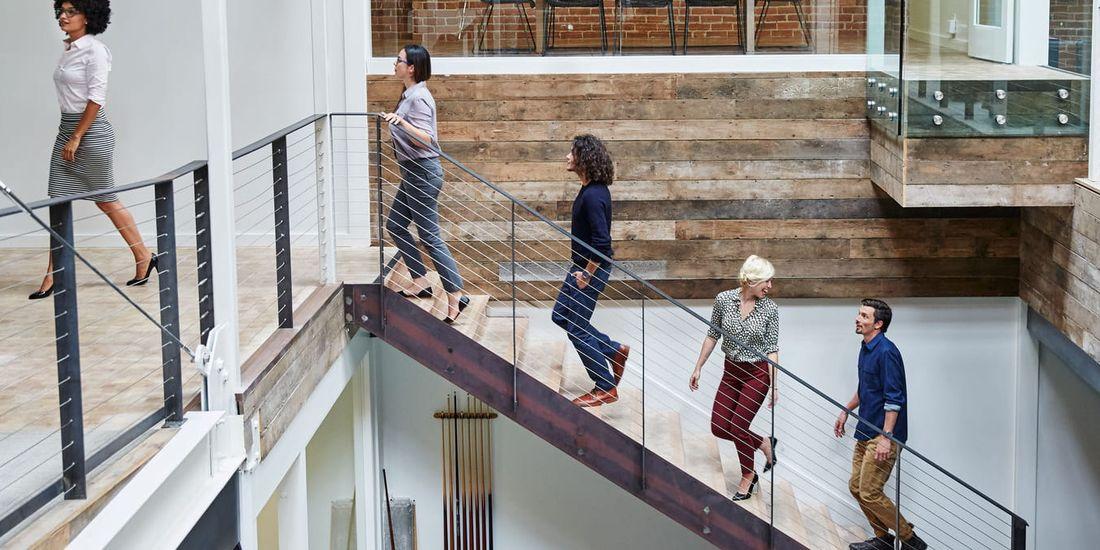'A Real Opportunity to Rethink How and Where We Work'
Two prominent experts on healthy workplaces - Kay Sargent of HOK and Genevieve Hanson of Ernst and Young - testified before Congress to encourage reimagined workplaces for federal buildings

During the pandemic, the world scrambled to accommodate remote work for a large share of employees. Now, returning to the office is an increasing reality, with a number of meaningful questions about the future of office work in the wake of work-from-home–and mainly, what does the future of work look like?
With the Biden administration and a group of lawmakers working to advance bipartisan infrastructure spending, the United States has set its sights on the largest capital infusion to public infrastructure in decades, including billions allocated to buildings. This spring, the Congressional Committee on Transportation and Infrastructure held a hearing on the future of federal real estate in a post-COVID world. Genevieve Hanson, Principal in Real Estate Planning, Execution and Operations at Ernst and Young, and Kay Sargent, Director of WorkPlace at HOK, testified before the committee on the challenges and opportunities COVID-19 has brought to the world of commercial real estate.
Hanson, an expert in real estate and sustainability, focused on the transformation of the office environment. Takeaways from her testimony include the increasing desire for “healthy buildings” and the value of well-being in the workplace:
1. The strong desire for “healthy buildings”
“There is a desire today for what I consider “healthy buildings” to support the physical, social and psychological health and well-being of those using these spaces… we will see an even greater focus on smart building design, energy efficiency and sustainability. Many view these elements as critical workplace amenities that better promote healthy buildings and workforce well-being; additionally, workers increasingly expect inviting places to relax, interact and collaborate.”
2. In-person interactions remain key for businesses
“The COVID-19 pandemic has emphasized the need to keep people at the center of business decisions. Remote working, or telework, has transitioned from being a perk to being commonplace at present. In many cases, organizations have relied on technology to maintain their employees’ productivity and connectivity; yet the need for in-person interactions remains strong — to collaborate, team and connect.”
3. Well-being must be prioritized in real estate
“The real estate and construction sectors combined represent approximately one sixth of our economy, and the federal government’s real estate portfolio comprises over 1 billion square feet, according to the [General Services Administration] (GSA). With more than 350,000 energy-utilizing buildings and 600,000 vehicles, the federal government is the nation’s largest energy consumer, based on Department of Energy analysis. Therefore, it matters how the public and private sector collaborate to support the physical, social and psychological health and well-being of people in buildings.”
Sargent’s testimony concentrated on the importance of a flexible workplace, especially with regard to the federal government. As Director of HOK’s WorkPlace program, Sargent’s role revolves around creating productive, happy and healthy work environments. She provides several key insights for preparing office spaces to handle the return of employees:
1. We cannot return to the offices of pre-COVID
“Even before COVID, our offices weren’t working. Many offices didn’t support the collaborative ways we work. The technologies we rely on. Our flatter organizational structures. Or our need to focus on operations and maintenance—not just design and construction. One thing we know is that returning to the office of yesterday is not the answer…We need to transform the office from a place where people have to be to an ecosystem of spaces where people want to be.”
2. The new office experience must consist of distinct components
“There are three components to this next-generation ecosystem that will support hybrid work:
- The Hub is the reimagined office—the primary physical place where the organization’s people come together.
- The Home where we can do individual work remotely.
- The Spoke is a plug-and-play place outside the main hub but with more
amenities than we have at home: be it a coworking center or a satellite office.
In this new work ecosystem, overall office space per agency could be reduced while providing more enticing environments and better experiences for their people. It would help us address environmental and human sustainability and well-being, which will improve productivity.”
3. The value of well-trained facility managers
“In creating and maintaining high-performance buildings capable of significantly reducing energy and water use while promoting worker health and safety, a well-trained facility management staff is an essential element. Hiring and training professional facility managers ensures a working knowledge of industry trends, best practices and that building systems continue to perform as intended.”
The testimonies from Hanson and Sargent highlight the need for progress in the way we structure our workplaces, and the pandemic has made clear why the federal government should be doing more to deploy buildings that are adopting those strategies to lead on health, safety and well-being.
Link to the original article.

